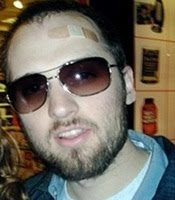Warner Brothers 1938 Robin Hood is neither the first nor the last Hollywood re-telling of the classic English folk hero, but it might be the definitive version. The film’s style remains its primary selling point: the charisma of Errol Flynn, the porcelain beauty of Olivia de Havilland, the whimsical musical score, the extravagant medieval sets and costumes, and the memorable action set-pieces. Director Michael Curtiz pushes the heavily-saturated three-strip Technicolor process to its limits. Color is an essential element to the Robin Hood character, the English equivalent of the green-man myths found across cultures, whose clothing signals his harmony with natural law over the order imposed by man. However, the most impressive visual moment, a sword-fight that casts shadows on the castle walls, would succeed in black-and-white. This particular adaptation prioritizes escapist fun as its highest creative goal. Sherwood Forest and Nottingham Castle serves as one giant playground where Robin can dress up, swing swords and shoot arrows with his buddies (the Merry Men), impress the pretty girl next door (Marion), and defeat the mean neighborhood bully (Prince John), all before dad (King Richard) comes home from work (the Crusades) to stop the game in time for dinner. Its innocence makes even the 1973 Disney version seem bleak by comparison. Much like the other famous British green man, Peter Pan, The Adventures of Robin Hood refuses to grow up.
Saturday, August 21, 2010
The Adventures of Robin Hood (1938, Michael Curtiz)
Warner Brothers 1938 Robin Hood is neither the first nor the last Hollywood re-telling of the classic English folk hero, but it might be the definitive version. The film’s style remains its primary selling point: the charisma of Errol Flynn, the porcelain beauty of Olivia de Havilland, the whimsical musical score, the extravagant medieval sets and costumes, and the memorable action set-pieces. Director Michael Curtiz pushes the heavily-saturated three-strip Technicolor process to its limits. Color is an essential element to the Robin Hood character, the English equivalent of the green-man myths found across cultures, whose clothing signals his harmony with natural law over the order imposed by man. However, the most impressive visual moment, a sword-fight that casts shadows on the castle walls, would succeed in black-and-white. This particular adaptation prioritizes escapist fun as its highest creative goal. Sherwood Forest and Nottingham Castle serves as one giant playground where Robin can dress up, swing swords and shoot arrows with his buddies (the Merry Men), impress the pretty girl next door (Marion), and defeat the mean neighborhood bully (Prince John), all before dad (King Richard) comes home from work (the Crusades) to stop the game in time for dinner. Its innocence makes even the 1973 Disney version seem bleak by comparison. Much like the other famous British green man, Peter Pan, The Adventures of Robin Hood refuses to grow up.
Subscribe to:
Post Comments (Atom)



No comments:
Post a Comment